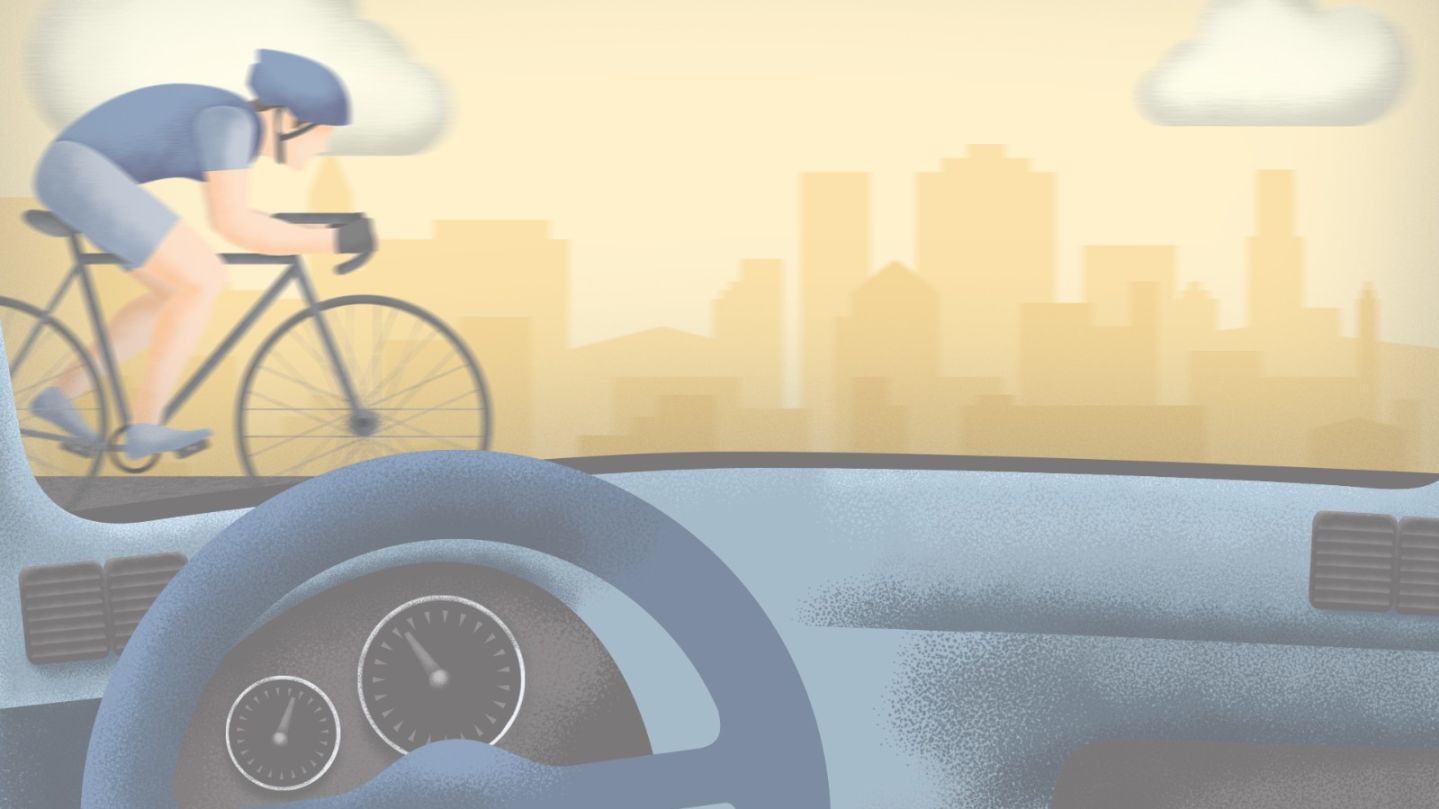Editor’s Note: Check out the weeklong series “DWD: Driving While Distracted” online and tune in to the TV special on CNNgo
Story highlights
Consumers may not know there are technologies available to stop distracted driving
55% of drivers would not deactivate technologies that eliminate potential distractions, according to survey
Driving while socially distracted is one of the most life threatening issues about our relationship to technology, and yet, in an ironic twist, the very thing that caused the problem may be the ultimate solution.
A number of technologies have been developed to try to eliminate potential distractions from our smartphones. And drivers, at least according to a recent survey, seem receptive to the idea.
In the survey sponsored by the National Safety Council, 2,400 drivers from across the country were asked what they would do if their car or mobile device came pre-set with technological solutions to block some outgoing and incoming communications distractions. Fifty-five percent of drivers said they would leave those technologies (PDF) in place to avoid being distracted. Only 23% of drivers said they would deactivate the technologies.
‘A disease and a vaccine’
“It’s the perfect problem for a technological solution,” said former space engineer and serial entrepreneur Scott Tibbitts of Boulder, Colorado. “It’s like a disease and a vaccine.”

Tibbitts is on a mission to try to bring an end to distracted driving. In 2008, after arriving for a business meeting, he learned that the person he was to meet with, the vice president of an engineering company, a husband and father of two, had been killed only hours earlier by a driver who was allegedly texting.
First, he felt a “cathartic empathy” about the tragedy and the man’s family, thinking what it would be like for his wife and children to get the call that their loved one had just been killed by a distracted driver. After all, he had just driven through that same intersection.
Then, he thought about how texting and driving is only going to get worse. “The entrepreneur kicks in. ‘Wow, maybe there’s a solution,’ ” Tibbitts said, recalling what he thought to himself at the time. “Maybe there’s an invention that could do this that could save a lot of lives.”
Tibbitts’ answer is a product called Groove, which he and a group of Colorado-based technology entrepreneurs created through the company Katasi.
Groove is a small device that plugs into your car, underneath the steering wheel, and connects your device to the cloud, letting your mobile phone provider know you are driving. The wireless provider blocks all emails, texts and social networking updates and prevents you from sending messages and posting on social media while driving.
“When you start driving, you go into the super airplane mode, where the things that would distract you go away,” Tibbitts, founder and chief executive officer of Katasi, said as he demonstrated Groove. “All of a sudden, those things are not on the phone anymore.”
If someone tries to text the person, they would get a notification that the recipient is driving right now. “I turn off my (car),and about 10 seconds later, all my messages come in, and it sort of just magically works,” Tibbitts said.
“Groove allows capabilities considered safe,” Tibbitts said, “such as navigation and music streaming.” The product also can be customized, for example if you want to block your teen from using either of those features while driving.
Groove has two pilot programs underway, one with Sprint in the United States and one with a major wireless provider in Australia. It is also in the discussion stage for pilot programs in Austria, Kenya and New Zealand and with two other wireless providers in the U.S. For Groove to work, it ultimately needs the support of the wireless phone providers.
“All you have to do is tell a carrier when somebody’s driving, and they just won’t send the things that could kill them,” Tibbitts said. When he and his colleagues tell people what they do, he says they respond with, “‘Oh my God. When is that coming? … When can I get it?’”
The wireless providers have their own answer: free apps, such as AT&T’s DriveMode, Sprint’s Drive First and Verizon’s Safely Go, which silence incoming phone and text messages, sending an autoreply to tell your friends and family that you are driving. The apps also prevent you from texting when the car is moving, but not all apps block access to social networking.
Technology sets up ‘driver zones’
One technology that does block a driver’s social networking updates and posts – as well as access to video games such as “Pokemon Go,” which has taken the world by storm – is Drive ID by Cellcontrol, a Baton Rouge, Louisiana-based company.
Currently available at a cost of $129, it is solar-powered and mounted to the windshield of the car under the rearview mirror. It also includes an app that you download to your device.
What it can do that other technologies can’t is automatically detect who is driving and who is not, shutting off alerts for only the driver, not the other passengers in the car.
“Because of where it is in the vehicle, it actually creates zones,” said Jesse Hoggard, Cellcontrol’s vice president of marketing. “So we can create driver zone versus passenger zone, and then it uses that field and our Bluetooth connection to the phone itself to know where those phones are and where they move in the vehicle.”
We tried Cellcontrol during a drive in Braselton, Georgia. Hoggard was driving, and I was in the passenger seat. When I texted him, I received an alert: “Jesse is currently driving and will respond to your message when the trip ends. Powered by Cellcontrol.”
Later, when Hoggard moved into the passenger seat and I texted him, my message went through.
But what’s to stop people, especially teens, from trying to jury-rig the system?
“Well, we planned for that,” Hoggard said. “I always tell people we’ve got a room full of engineers whose job it is to think like 16- and 17-year-olds and then stay one or two steps ahead of them. So anytime they try to disable the app, delete the app (or) … pull the device off the windshield, we know that, and in a lot of cases, we can prevent it.”
Cellcontrol also offers the driver and the administrator (in many cases the parent) a report on each trip, with the driver being scored on how well they drove, including speed, acceleration and harsh braking. “So with that feedback along with preventing distraction in the process, that driver over time learns better habits and becomes a better driver,” Hoggard said.
Other technologies already exist, and many others are in development, but the challenge for all of them is making sure consumers know they exist and are willing to buy and use them.
Groove’s Tibbitts is confident that if mobile providers are willing to cover the capital expenditure costs to make his technology available, consumers would pay $5 to $10 a month “in a heartbeat” for it.
“It’s like two lattes to protect my daughter,” he said. “If we build it, will they come? We absolutely know they will.”
Down the road, the technology to stop any driving while distracted may be the technology that lets drivers enjoy all the distractions they want, the technology that removes the need for any drivers at all.
Follow CNN Health on Facebook and Twitter
“There are some people that think autonomous vehicles are going to solve” the problem, said David Greenfield, founder of the Center for Internet and Technology Addiction and assistant clinical professor of psychiatry at the University of Connecticut School of Medicine. “If you have an autonomous vehicle that doesn’t require you to attend, then you could talk on the phone all you want, do whatever you want, but we’re a little ways away from that.”
Coming Friday: Beyond technology, what else can be done to persuade people not to check their phones while behind the wheel?
Do you think technology is the answer to stop distracted driving? Share your thoughts with Kelly Wallace on Twitter @kellywallacetv.
















